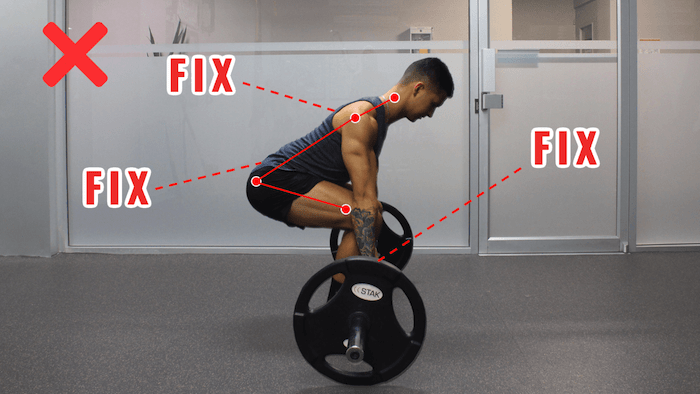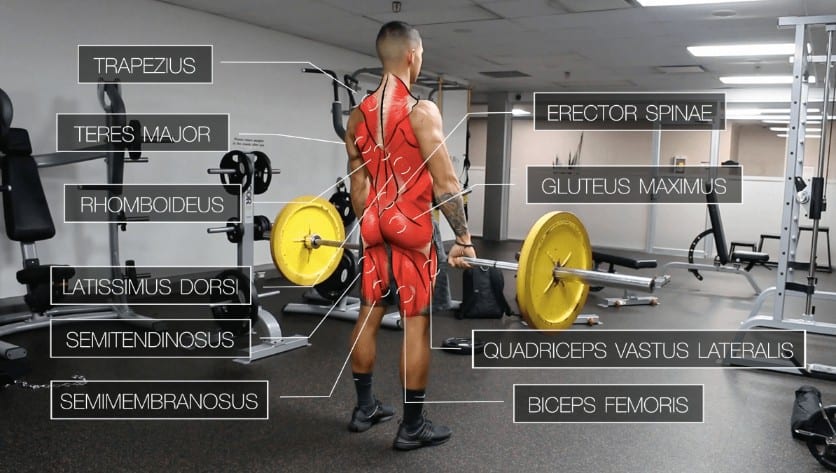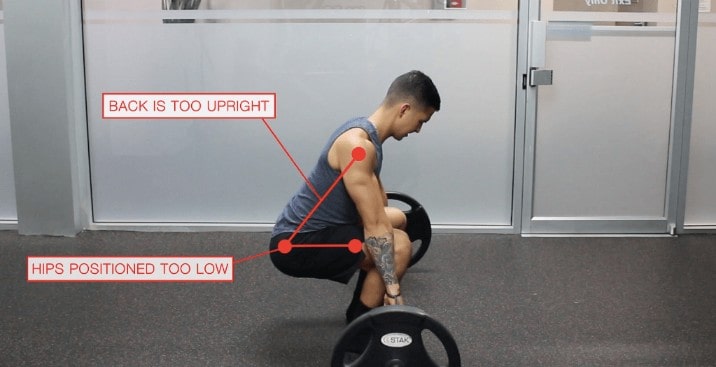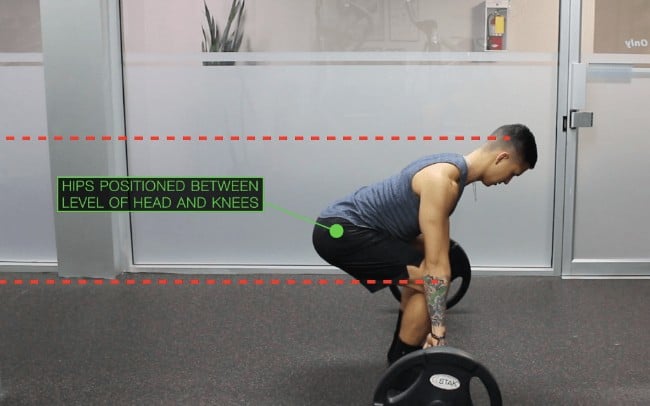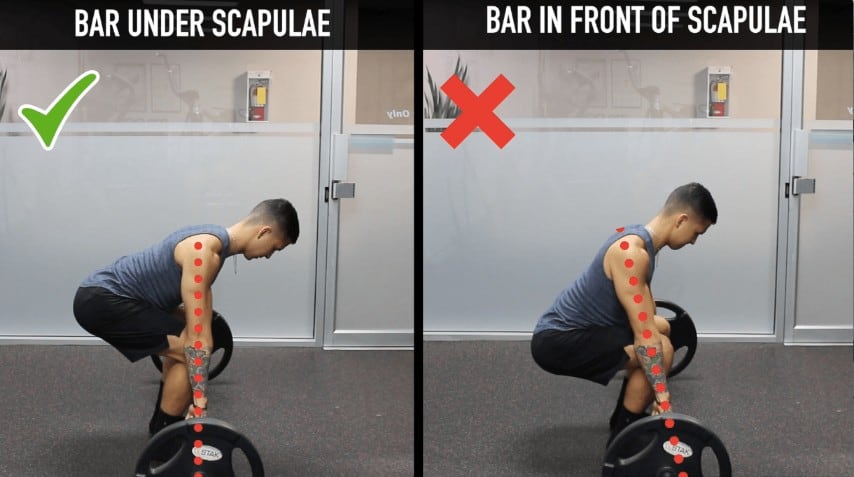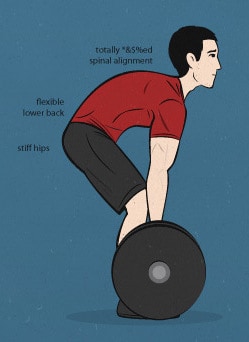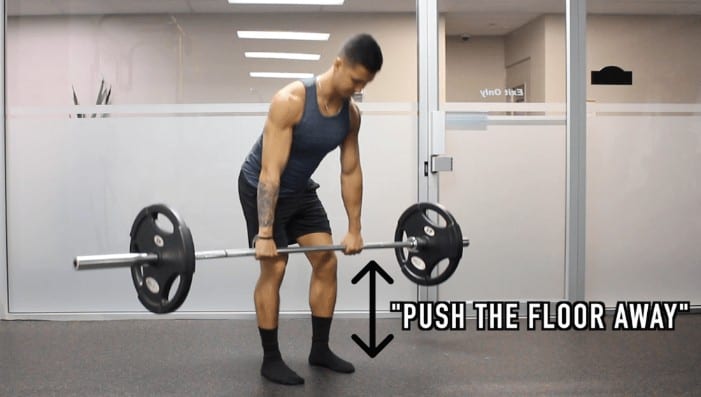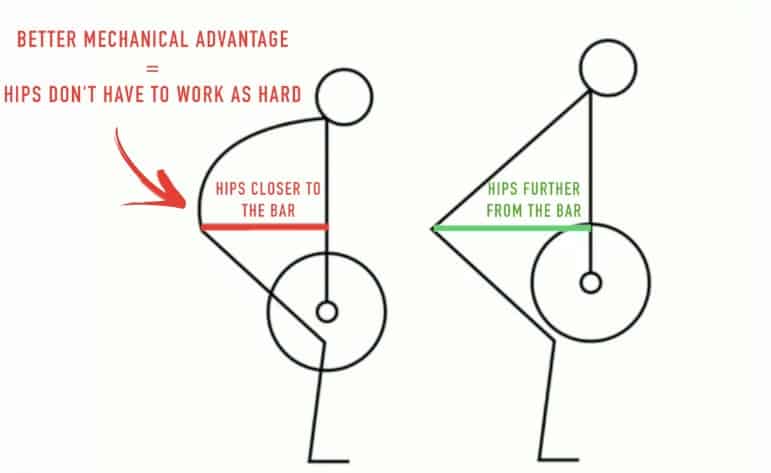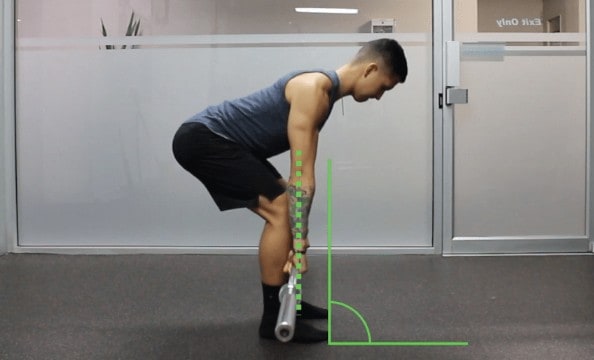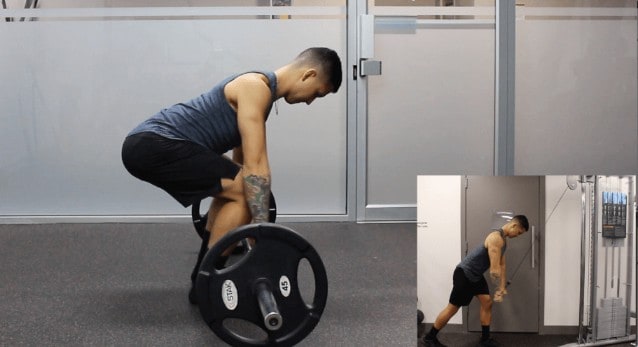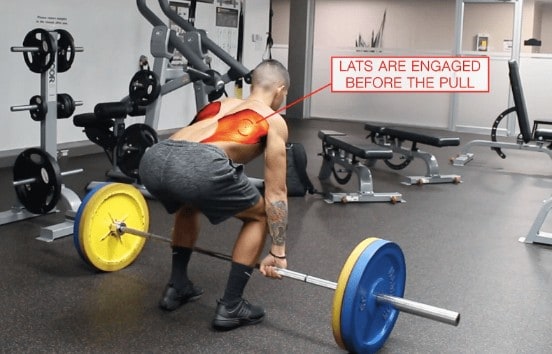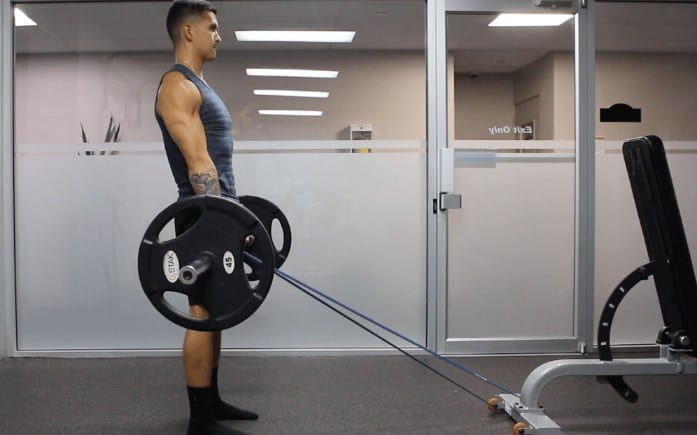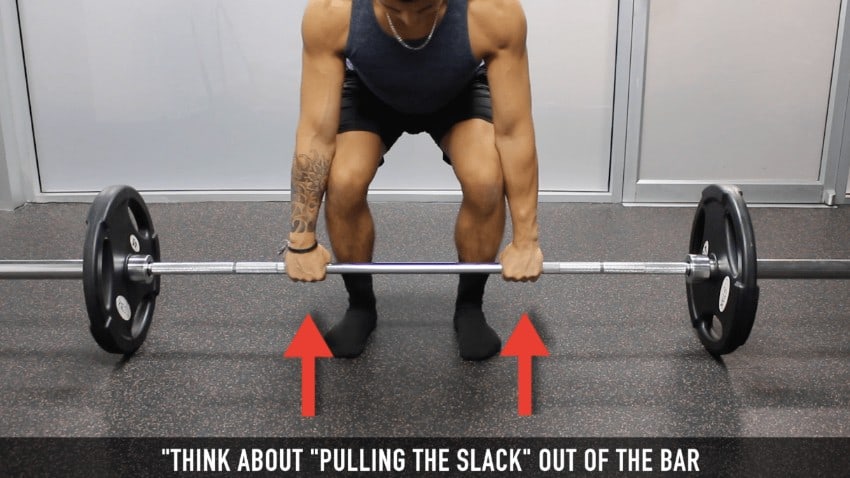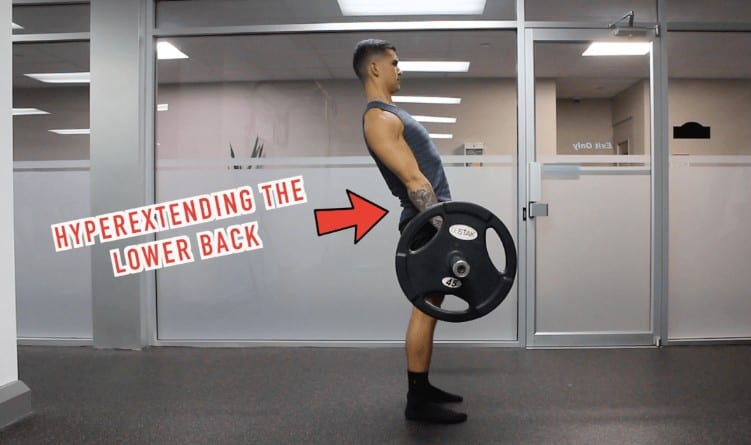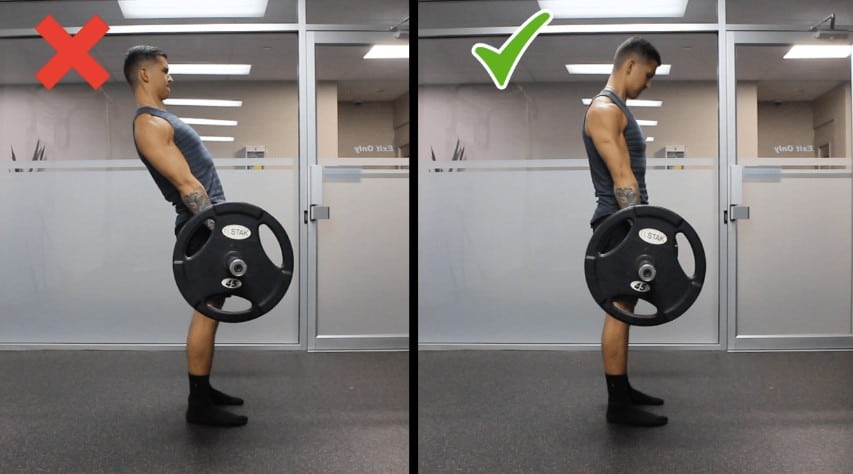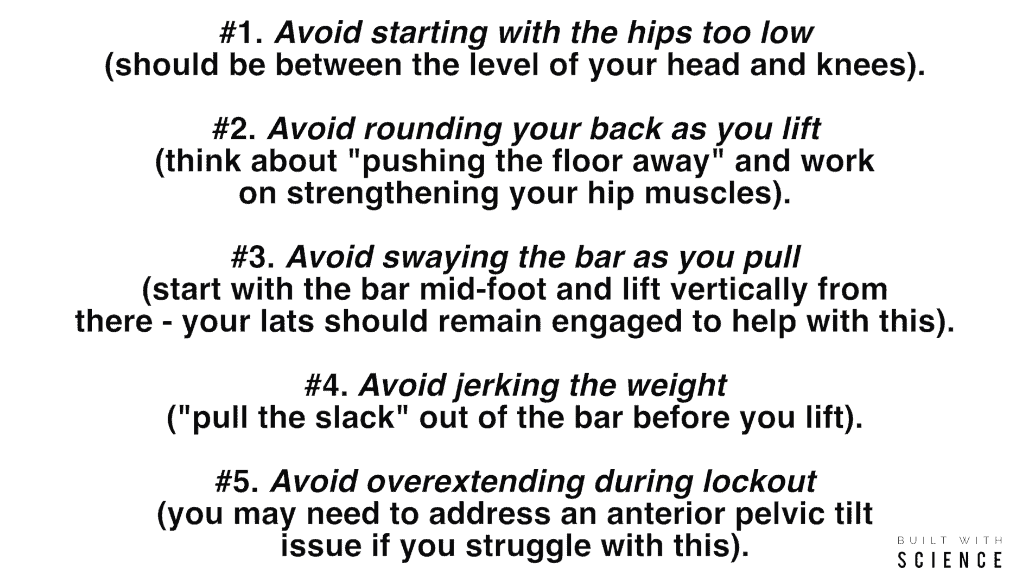How to Deadlift for Growth (5 Mistakes You’re Probably Making)
If you want to learn how to deadlift in a way that will maximize growth and reduce your risk of injury... Then you need to read this article.
If you’re seeking to add upper back thickness, accentuate your V-taper, and build a powerful looking backside then deadlifts should definitely be a staple in your routine.
Simply put - it’s one of the best compound exercises to develop the several hip and back muscles that make up your posterior chain.
This is likely because, as shown in this 2011 study from the Journal of Strength and Conditioning Research:
"The deadlift enables you to lift more weight when compared to any other free-weights exercise."
Meaning that you'll be able to progressively overload the deadlift more effectively than any other exercise - leading to faster muscle growth when compared to other movements.
And the good doesn't stop there. Research also indicates that it’s an effective tool to use for improving explosive strength and vertical jump performance. Making it an all around effective exercise for size, strength, and athleticism that should definitely be incorporated into your routine.
However, despite the seemingly straightforward movement pattern of the deadlift, most people just don't perform the lift very well - especially if you've never been coached on how to do so.
Because if you want to maximize its effectiveness while reducing your risk of injury, there’s a lot more that goes into it than simply picking a weight up off the floor.
Thus, this article I’ll cover the five most common errors people make with the deadlift, and more importantly, I’ll show you how to easily fix them right away.
Before that: if you're looking for a training program that'll help you perform each and every single exercise safely and correctly for optimal muscle growth, I've got just the thing for you. Every BWS program is designed to be an all-in-one, science-based process that’ll get you to your dream physique FAST. And best of all? It's all rooted in science. For more information:
Click the button below to take my analysis quiz to discover the best program for you:
↓
MISTAKE 1: “Squatting” The Deadlift
One of the most common errors people make with the deadlift is essentially turning it into a squat movement pattern.
As shown below, this is mistakenly done by positioning the hips too low and maintaining an upright back during the setup:
And this is problematic because when the hips are positioned too low, your body is placed behind the bar to a greater extent.
This in turn both creates unfavourable leverages that cause more stress on the lower back AND decreases the amount of weight you can lift since your centre of gravity isn’t placed in an optimal position.
So what should you do instead? Simple.
When in the starting position, focus on the following 2 key points:
1) While keeping your chest up and back straight, ensure that your hips are positioned between your knees and your head (rather than having your hips too low or too high):
2) Ensure that the bar is positioned directly underneath your scapulae. If your hips are too low, you’ll notice that the bar is now positioned in front of the scapulae, which is an indication you should readjust your hip position:
Sticking to these 2 points will help ensure your hips are in the right position - leading to a more powerful, safer deadlift.
MISTAKE 2: Rounding The Back
I’m sure you’ve all witnessed the all-too-common rounded deadlift at your local gym...
...and it's probably the most problematic mistake that lifters make when it comes to this movement and acute back injuries.
Ideally, throughout the deadlift and especially during the pull, your spine should remain straight with your head, hips, and back all inline. But if you’re struggling with this AND are sure you’re not using a weight that’s too heavy for you, then there's a couple things you need to do.
First off, what you need to do is change the way you think of the deadlift.
Rather than thinking about pulling the weight up from the floor, think about “pushing the floor away with your feet” as you lift the bar - similar to how you would push your feet during a leg press.
Use this pushing cue for the first 3-4 inches of the pull and then after that, drive your hips forward to complete the pull.
This subtle yet effective cue often helps people keep their hips from rising too quickly which prevents their back from rounding during the pull.
Now in addition to this, you will likely need to strengthen your hips.
A rounded deadlift is essentially a compensation for weak hips.
As shown below, rounding your back actually brings your hips closer to the bar. This gives them a better mechanical advantage - meaning that your hips don’t have to work as hard to get the weight up:
So to solve this, you need to strengthen your hips. And the best way to go about doing this is to incorporate more hip strengthening exercises into your routine. Exercises like glute ham raises, split squats, and hip thrusts are all great options.
Focusing on these exercises in combination with the deadlift cue mentioned earlier will make a big difference in improving your lift.
MISTAKE 3: Not Maintaining A Straight Bar Path
In order to perform an efficient deadlift, the barbell path needs to be as short as possible from start to finish.
This means it needs to ideally travel in a perfectly vertical line such that the final position of the bar should be directly over where it was on the floor:
However, a common mistake people make is either having the bar start too far away from them when on the ground OR not keeping the bar as close as possible to the body when performing a rep.
Instead, what you want to do is first place the bar over your mid-foot. Then as you lift the weight off the floor, do so by dragging it as close to your shins and thighs as possible to ensure it’s being lifted in a vertical line.
But to most effectively accomplish this, you need to focus on engaging your lats throughout the movement. To do this, before you pull, think about essentially performing a straight arm pulldown with the bar in order to engage the lats:
And as shown below, you should feel your lat muscles activated and turned on as a result of this:
You want to maintain this lat engagement as you pull the bar up from the floor during each rep, since this will help with your bar path and with overall stability.
Now if you're still struggling with feeling this, what you can do is attach a resistance band to the bar and pull backwards against the band by using your lats. Then, perform a few light reps while keeping your lats engaged.
This should help you learn what it feels like to properly use your lats during the deadlift.
Still can't feel that activation in your lats no matter how hard you try? Don't worry. The team here at BWS (along with myself) have successfully coached many like yourself - and are confident that we'll be able to help you finally feel that lat engagement during your deadlifts. If you'd like a stronger deadlift (and to achieve your dream physique in the most time-efficient way possible):
Click the button below to find out more about the 3-on-1 coaching program:
↓
MISTAKE #4: Jerking The Weight Off The Floor
Another common mistake people make with the deadlift is jerking the weight off the floor from a relaxed position.
What happens when you do this is that you’re not generating the muscular tension needed prior to the lift.
As a result, this often leads to back pain or discomfort and makes the lower back more likely to round as you lift the weight.
Instead, the last thing you should do before lifting the weight is raise your chest up while slightly pulling up on the bar to generate tension before the pull.
Only after you do this small step should you then proceed to perform your rep.
MISTAKE #5: Overextending The Lockout
The deadlift should be finished with solid hip extension, meaning that:
- You’re contracting your glutes and feeling them activate
- Your hips are pushed forward until the bar stops them from traveling any further
What a lot of people do however is continue on by hyper-extending the lumbar spine and leaning back at the top position...
...which is completely unnecessary and causes a lot of stress on the lower back.
And for some this may be just due to a technical error and can be fixed by simply avoiding an excessive lean back at the top.
But for many people it’s a result of an anterior pelvic tilt or just not knowing how to properly contract the glutes by posteriorly tilting the pelvis during the deadlift. In which I’d highly suggest reading my article on anterior pelvic tilt which will help you out in this case.
To sum everything up for you, here are the main points you want to takeaway from this article:
As I’ve said before, choosing the right exercises is one thing, but performing them correctly and optimally is what makes all the difference. And if you’re looking for an evidence-based program that shows you exactly how to do so, so that you can be sure you’re maximizing your efforts, then head on over here to pick the best program for you.
Anyways, that’s it for this article. Hope you enjoyed it. Do feel free to let me know if you have any questions down below - and give me a follow on Instagram , Facebook , and Youtube where I’ll be posting informative content on a more regular basis. Cheers!
And for those looking for a complete step-by-step program that uses science to show you how to properly train AND eat week after week to transform your body in the most efficient and injury-free way possible, then:
Click the button below to take my analysis quiz to discover the best program for you:
↓






